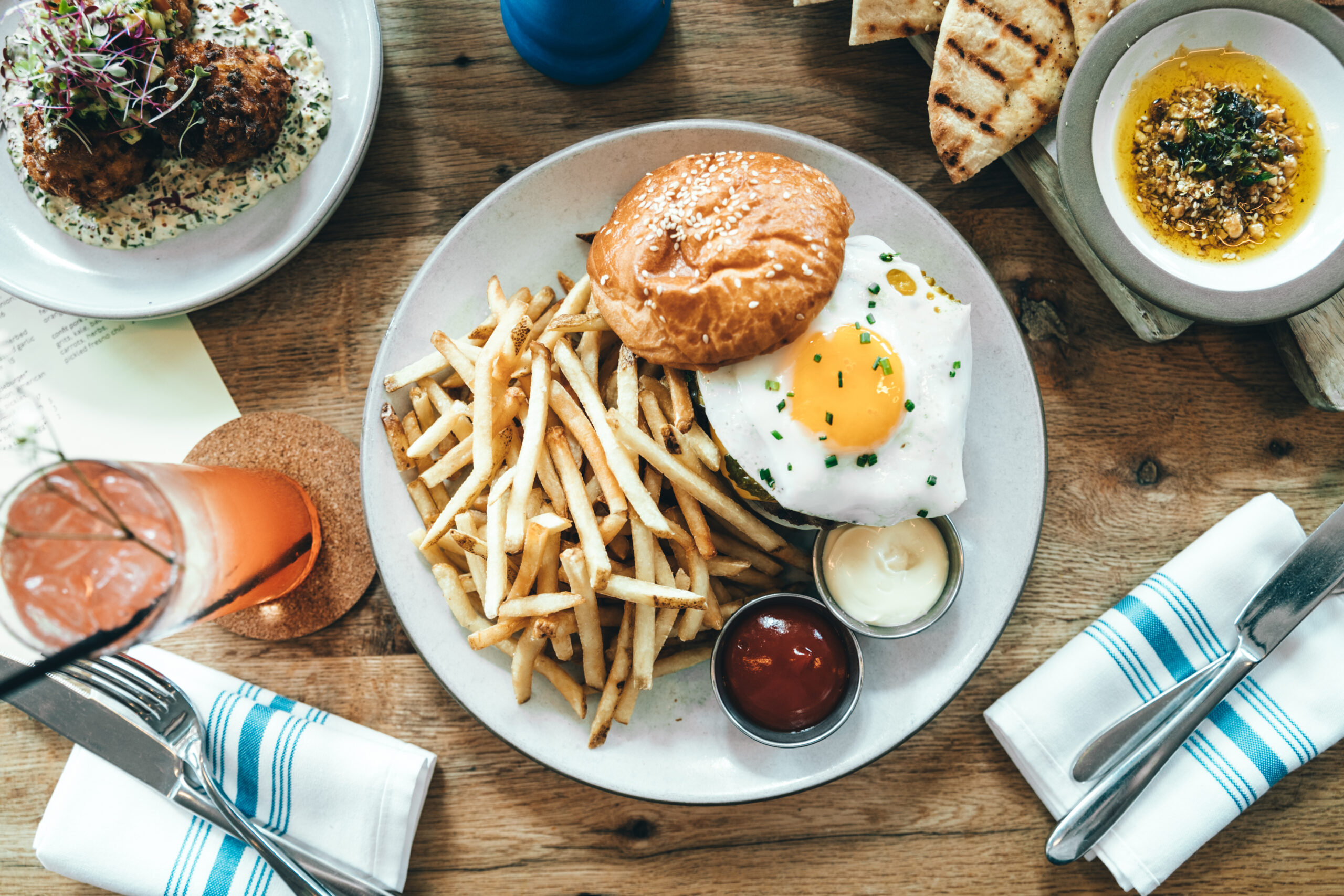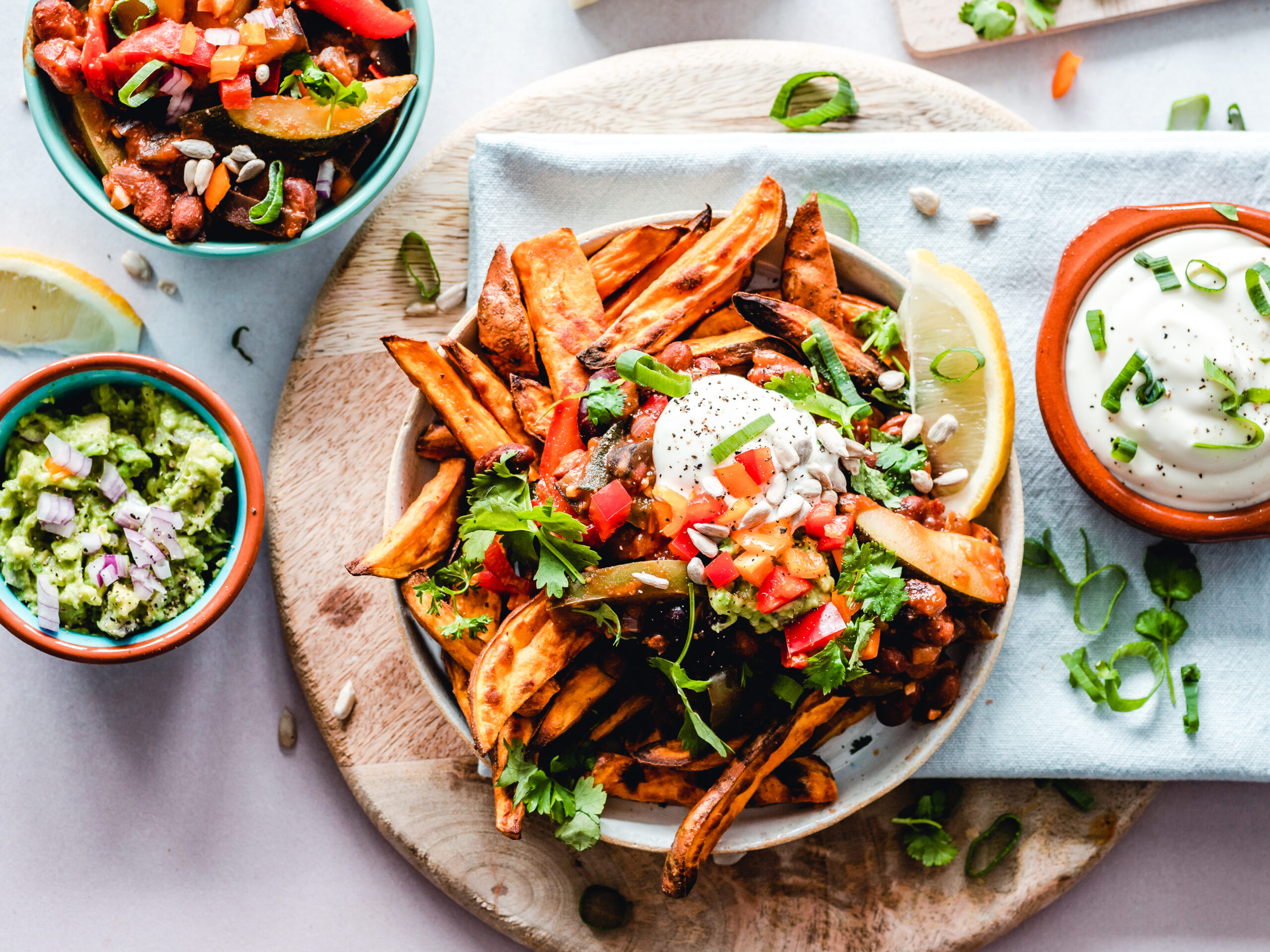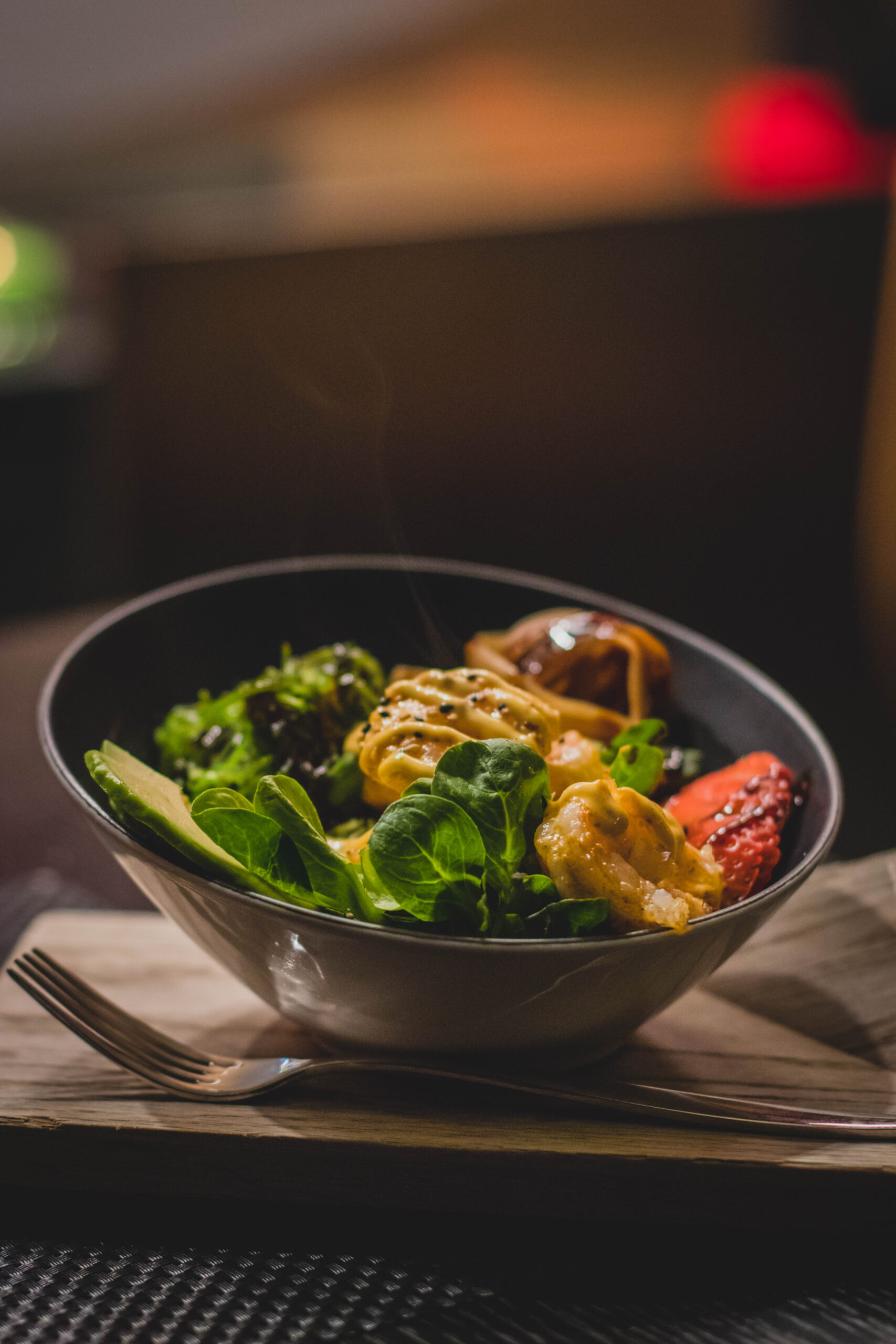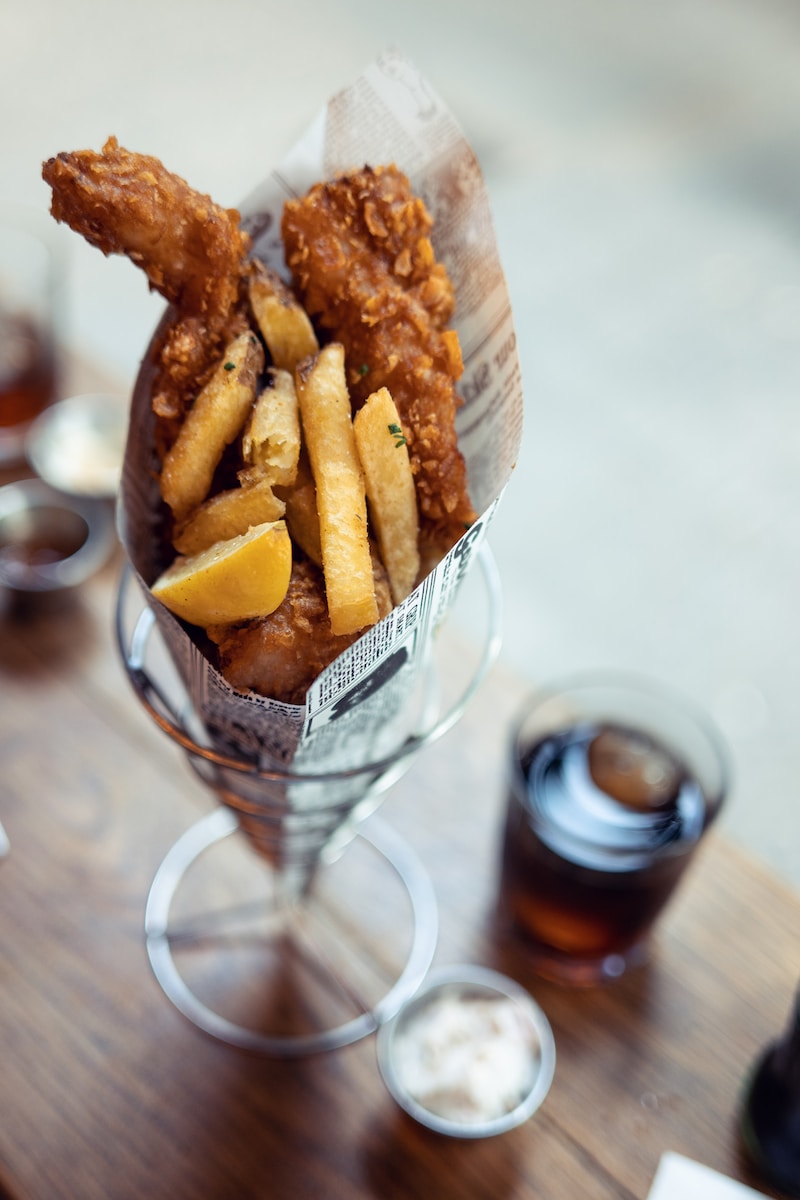Today, you are about to embark on a culinary adventure that will transport your taste buds to the bustling streets of England. In this article, we will guide you through the process of making the iconic and mouthwatering dish of traditional fish and chips. Get ready to dive into the world of crispy battered fish, golden-fried chips, and a squeeze of tangy lemon. With our easy-to-follow recipe, you’ll soon be savoring the satisfying crunch and flavor of this classic dish, right in the comfort of your own kitchen. So, roll up your sleeves, don your apron, and get ready to impress your family and friends with a plate of deliciousness that will have them coming back for more.

Table of Contents
Ingredients For Traditional Fish and Chips
For the fish:
- Fresh white fish fillets (such as cod or haddock)
- Salt and pepper to taste
- Flour for dusting
For the batter:
- 1 cup all-purpose flour
- 1 teaspoon baking powder
- 1/2 teaspoon salt
- 1 cup ice-cold water
For cooking:
- Vegetable oil for frying
For the chips:
- 4 large potatoes
- Salt to taste
For serving:
- Tartar sauce
- Malt vinegar
Choosing the Right Fish
Selecting a white fish
When it comes to making traditional fish and chips, selecting the right type of fish is crucial. You want a white fish that has a mild flavor and a firm texture that holds up well when fried. Some popular options for fish and chips include cod, haddock, and pollock. These fish are readily available in most supermarkets and fish markets. Opting for a sustainable choice, such as Marine Stewardship Council (MSC) certified fish, ensures that you are making an environmentally responsible decision while still enjoying a delicious meal.
Considering the freshness of the fish
Freshness is key when it comes to seafood, and fish and chips are no exception. Look for fish fillets that are firm, glistening, and have a mild aroma of the sea. Avoid any fillets that appear slimy or have a strong fishy smell, as these are signs of spoilage. If possible, purchase your fish from a reputable fishmonger who can guarantee its freshness. Remember, the quality of your fish will greatly impact the taste of your final dish.
Choosing the right thickness of the fillets
Choosing the right thickness of the fish fillets is essential for achieving perfectly cooked fish and chips. Ideally, you want fillets that are around 1 inch thick. This thickness allows the fish to cook evenly and ensures a crispy exterior while maintaining a moist and tender interior. Thinner fillets may cook too quickly and become dry, while thicker fillets may take longer to cook and may not achieve the desired crunchiness. If needed, you can ask your fishmonger to cut the fillets to your desired thickness.
Preparing the Batter
Gathering the ingredients
Before you start making the batter, gather all the necessary ingredients. For a basic fish and chips batter, you will need flour, baking powder, salt, and water. You can also add a touch of beer to the batter for extra flavor and lightness. Make sure you have all the ingredients measured out and ready to go, as this will make the mixing process smoother.
Mixing the batter
To prepare the batter, combine the flour, baking powder, and salt in a large mixing bowl. Gradually add the water (and beer if using), whisking continuously until you achieve a smooth and slightly thick consistency. The batter should be thick enough to coat the fish but still light and airy. Avoid over-mixing the batter, as this can result in a dense coating. If desired, you can season the batter with additional spices or herbs to enhance the flavor.
Allowing the batter to rest
Once the batter is mixed, it is important to let it rest for a short period. Allowing the batter to rest for around 20 minutes to 1 hour gives the gluten in the flour time to relax. This relaxation process helps the batter become lighter and crispier when fried. While the batter is resting, you can move on to prepping the potatoes for the chips.

Prepping the Potatoes
Choosing the right type of potato
For the perfect fish and chips experience, it is crucial to choose the right type of potato. Look for starchy potatoes, such as Russet or Maris Piper, as they have a high starch content and a fluffy texture when cooked. Avoid waxy potatoes, as they tend to hold moisture and result in less crispy chips.
Peeling and cutting the potatoes
To prepare the potatoes, start by peeling them to remove the skin. Once peeled, cut the potatoes into evenly sized chips. For traditional fish and chips, aim for chips that are approximately 1/2 inch thick. Cutting the chips to a consistent size ensures even cooking and a uniform texture.
Soaking the potatoes
After the potatoes are cut into chips, it is important to soak them in cold water for about 30 minutes. Soaking the potatoes helps remove excess starch, resulting in crispier chips. Additionally, it prevents them from turning brown while you prepare the rest of your meal. After soaking, thoroughly drain the chips and pat them dry with a clean kitchen towel.
Preparing the Chips
Drying the soaked potatoes
Once the chips have been drained and patted dry, it is crucial to remove as much moisture as possible. Wet chips can cause the hot oil to splatter, leading to a messy and potentially dangerous situation. Ensure that the chips are as dry as possible before moving on to the frying step.
Frying the chips at a low temperature
To achieve the perfect chip, follow a two-step frying process. Begin by frying the chips at a low temperature, around 325°F (160°C). This initial frying process cooks the potatoes through and softens them without browning. Fry the chips in small batches to avoid overcrowding the fryer, allowing them to cook evenly. After the first fry, remove the chips from the oil and let them drain on a paper towel-lined tray.
Draining and cooling the cooked chips
After the chips have been fried at a low temperature, it’s time for the final fry. Increase the oil temperature to 375°F (190°C) and carefully add the par-cooked chips back into the hot oil. This second fry achieves the desired golden brown and crisp exterior. Fry the chips until they are evenly golden and crispy, then remove them from the oil and let them drain on a fresh paper towel-lined tray. Allow the chips to cool slightly before serving.

Dipping Sauce Options
Tartar sauce
Tartar sauce is a classic accompaniment for fish and chips. This creamy and tangy sauce is typically made with mayonnaise, pickles, capers, lemon juice, and various herbs and seasonings. The flavors of tartar sauce complement the crispiness of the fish and add a delightful tangy kick.
Tomato ketchup
For those who prefer a simpler and more familiar flavor, tomato ketchup is a popular choice. Its sweetness and tanginess nicely balance the savory flavors of the fish and chips. You can use store-bought ketchup or try making your own for a homemade touch.
Malt vinegar
If you prefer a tangy and acidic option, malt vinegar is a traditional choice for fish and chips. This vinegar enhances the flavors and adds a delightful zing to each bite. Simply drizzle the vinegar over your fish and chips, or serve it in small bowls on the side for dipping.
Garlic mayo
For a twist on the classic dipping sauces, consider making garlic mayo. This creamy sauce is made by combining mayonnaise with minced garlic, lemon juice, and a pinch of salt. The garlicky flavor adds a delicious kick to the fish and chips, giving them a unique and flavorful twist.
Frying the Fish
Drying the fish fillets
Before you start coating the fish fillets, it’s important to ensure they are dry. Pat the fillets with a paper towel to remove any excess moisture. Drying the fish helps the batter adhere better and promotes a crispier crust.
Coating the fish with flour
Coating the fish fillets with flour creates a thin layer that helps the batter stick to the fish. Lightly dust each fillet with all-purpose flour, shaking off any excess. This step ensures that the batter adheres evenly to the fish, resulting in a perfectly fried and crispy coating.
Dipping the fish into the batter
Once the fish fillets are coated with flour, it’s time to dip them into the prepared batter. Gently lower each fillet into the batter, ensuring that it is fully submerged. Use a fork or tongs to carefully flip the fillet, ensuring that both sides are evenly coated with batter. Allow any excess batter to drip off before transferring the fish to the hot oil.
Frying the fish until golden brown
Heat a deep fryer or a large pot filled with oil to approximately 375°F (190°C). Carefully place the battered fish fillets into the hot oil, ensuring they are not overcrowded. Fry the fish for approximately 4-6 minutes per side, or until the batter turns a beautiful golden brown. Remember to maintain a consistent oil temperature throughout the frying process to achieve the best results.
Draining the excess oil
After frying the fish, carefully remove them from the hot oil and place them on a paper towel-lined tray. This allows any excess oil to drain off, ensuring a crispier and less greasy final result. Allow the fish fillets to rest for a few minutes while you prepare the remaining components of the dish.

Draining and Resting
Placing the cooked fish on paper towels
Once the fish fillets have been removed from the hot oil, place them on a tray or plate lined with paper towels. The paper towels will absorb any excess oil and help keep the fish crisp.
Allowing it to drain excess oil
Let the cooked fish rest on the paper towels for a few minutes to allow any remaining oil to drain off. This step is important to prevent the fish from becoming overly greasy and maintain its crispy texture.
Resting for a few minutes
While the fish is draining excess oil, let it rest for a few minutes. This brief period allows the fish to settle and the flavors to develop. Resting enhances the texture and taste of the fish, making it even more enjoyable when served.
Serving and Presentation
Arranging the fish and chips on serving plates
Once the fish and chips have been cooked and drained, it’s time to plate your delicious meal. Arrange a portion of chips on one side of a plate and place a piece of fried fish on the other side. Keep in mind that traditional fish and chips are often served on plain white plates, emphasizing the simplicity and beauty of the dish.
Garnishing with parsley
To add a touch of freshness and color to your dish, sprinkle chopped fresh parsley over the chips and fish. This simple garnish not only enhances the presentation but also imparts a subtle herbaceous flavor.
Serving with lemon wedges
To provide a burst of acidity, serve lemon wedges alongside the fish and chips. Squeezing a bit of lemon juice over the fish just before eating adds brightness and cuts through the richness of the dish.
Providing salt and vinegar on the side
No fish and chips meal is complete without salt and vinegar. Offer small bowls or shakers of salt and malt vinegar on the side, allowing diners to season their dish to their liking. Adding a sprinkle of salt and a drizzle of vinegar can elevate the flavors and bring out the best in your fish and chips.
Enjoying the Meal
Pairing with a cold beverage
To complement the flavors of your fish and chips, consider pairing them with a cold beverage of your choice. A crisp lager or ale often makes an excellent choice, as its refreshing nature balances the richness of the dish. Alternatively, you can opt for a chilled glass of white wine or a non-alcoholic option like a sparkling lemonade.
Adding condiments and sauces
Alongside the traditional tartar sauce, ketchup, and malt vinegar, you can offer a variety of condiments and sauces to enhance your fish and chips experience. Some popular additions include mayonnaise, spicy mustard, sweet chili sauce, or even a tangy mango chutney. Experimenting with different combinations can add a playful twist to your meal.
Savoring the crunchy texture
Take a moment to appreciate the satisfying crunch of the crispy batter coating and the perfectly cooked fish. The contrast between the crispy exterior and tender interior is a hallmark of traditional fish and chips. Savor each bite, enjoying the harmonious combination of flavors and textures.
Indulging in the traditional flavors
As you enjoy your fish and chips, embrace the nostalgic and comforting flavors that have made this dish a British classic. Let the crispy chips and succulent fish take you on a journey to seaside fish and chip shops and bustling coastal towns. Whether you’re eating alone or sharing the meal with loved ones, relish in the time-honored flavors and the joy of a well-executed dish.
Tips and Variations
Trying different types of fish
While cod, haddock, and pollock are the traditional choices for fish and chips, don’t be afraid to experiment with different types of fish. Some alternatives to consider include halibut, sole, or even salmon. Each fish brings its unique flavor and texture, allowing you to customize your fish and chips to your liking.
Adding herbs and spices to the batter
If you want to elevate the flavor profile of your batter, consider adding herbs and spices. You can experiment with dried herbs like dill, thyme, or parsley, or spices like paprika, garlic powder, or cayenne pepper. Adding these extra elements to the batter can give your fish a different twist and bring new dimensions to the dish.
Experimenting with different dipping sauces
While tartar sauce, ketchup, malt vinegar, and garlic mayo are classic choices, don’t limit yourself to these options. Feel free to explore other dipping sauces such as curry sauce, wasabi mayo, or even a tangy sriracha aioli. The possibilities are endless, and experimenting with different sauces can bring an exciting element to your fish and chips experience.
Using a deep fryer for convenience
If you have a deep fryer at home, it can make the process of frying fish and chips more convenient and efficient. Deep fryers often have temperature controls, which can help maintain a consistent frying temperature. They also come with baskets for easy frying and draining. However, if you don’t have a deep fryer, a large pot with a thermometer works just as well.
By following these comprehensive steps, you can create a delicious plate of traditional fish and chips in the comfort of your own kitchen. From choosing the right fish to perfecting the golden batter and crispy chips, each element plays a vital role in creating this beloved dish. So gather your ingredients, fire up the fryer (or pot), and embark on a culinary journey that will satisfy both your taste buds and your nostalgia. Enjoy!
